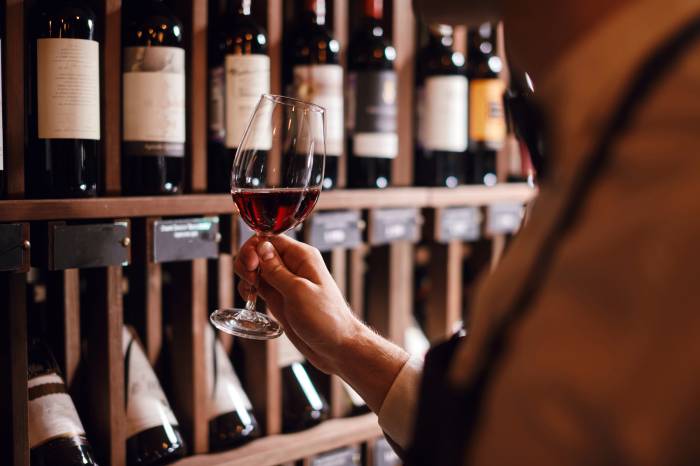California labels surpass Bordeaux First Growths in Liv-ex ranking
California wines including Screaming Eagle and Harlan Estate climb above Bordeaux icons
2025-09-09

Liv-ex, the global exchange for fine wine market data, has released its 2025 Classification, a ranking of the world’s top wines based on trade prices. The new list comes at a challenging time for the fine wine sector, which is experiencing its longest downturn in recent history. The Liv-ex Fine Wine 1000 index, a broad measure of the market, has dropped by 23% over the past two years. Despite this, several wines have managed to rise in the rankings, showing resilience amid difficult conditions.
The Liv-ex Classification was first published in 2009 and originally focused only on Bordeaux. Since then, it has expanded to include wines from around the world. The 2025 edition is the most geographically diverse yet, featuring wines from ten countries. This is the widest spread since Liv-ex broadened its scope beyond Bordeaux in 2017.
The methodology behind the classification is inspired by Bordeaux’s historic 1855 Classification but uses modern criteria. To qualify, a wine must meet a minimum price threshold and show consistent trading activity on the Liv-ex exchange between July 1, 2024 and June 30, 2025. Only wines with at least five vintages traded and at least twelve trades during this period are considered. The average trade price per case is calculated using only the last ten physical vintages for each wine.
France remains dominant in the global fine wine market. Of the 332 wines included in this year’s ranking, France accounts for 207 entries. Burgundy leads with more First Growths than any other region, while Bordeaux contributes breadth with 106 qualifying wines—almost one-third of the total list. Champagne and Rhône also have strong representation.
Italy has strengthened its position as well, with 86 wines making the list—up from 65 in 2023. Tuscany and Piedmont are Italy’s leading regions, while Veneto, Umbria and Abruzzo also appear. The United States follows with 15 entries, all from California. Spain has nine wines on the list, mostly from Castilla y León and Rioja.
Other countries represented include Argentina (six wines), Chile (three), Australia (two), New Zealand (two), Switzerland (one) and Portugal (one). However, some regions saw fewer qualifying wines compared to previous years. For example, Australia dropped from five entries in 2023 to just two this year. This may reflect buyers’ preference for established regions during uncertain market conditions.
The classification is divided into five tiers based on average trade price per case. The lowest tier includes wines priced between £284 and £354 per case of twelve bottles; most of these are Bordeaux labels, with a few exceptions such as Ata Rangi Pinot Noir from New Zealand and Vietti Castiglione Barolo from Italy.
The fourth tier covers wines priced between £355 and £496 per case and is notable for its regional diversity—seven countries are represented here. The third tier includes 66 wines priced between £497 and £780 per case; among them, Giacomo Conterno’s Barbera d’Alba Francia and Vieux Télégraphe made significant jumps from fifth to third tier.
The second tier is the largest group with 140 wines from six countries. While Bordeaux is well represented here, many of its entries are at the lower end of this price band. In contrast, Champagne shows a wider range of prices within this tier.
The first tier features 66 wines trading above £2,839 per case. Burgundy dominates this elite group with half of all entries. Domaine de la Romanée-Conti holds the top three spots: Romanée-Conti leads with an average trade price of £172,461 per case, followed by La Tâche and Richebourg. Petrus from Bordeaux ranks fourth overall but ahead of other First Growths such as Latour, Lafite Rothschild, Margaux, Mouton Rothschild and Haut-Brion.
California’s presence in the top tier is also notable. Screaming Eagle (both flagship and second wine), Harlan Estate, Promontory and Scarecrow all rank higher than any of Bordeaux’s original First Growths.
Only two wines moved up from second to first tier this year: Clos des Lambrays and Domaine Leflaive’s Puligny-Montrachet Clavoillon—both Burgundies. Fourteen additional Burgundies that did not qualify last year now appear in the top tier as well.
Some high-profile labels such as Leroy Musigny or Liber Pater did not make the list because they trade too infrequently to establish a consistent market price.
The Liv-ex Classification continues to serve as a benchmark for collectors and investors by providing a transparent hierarchy based solely on market data rather than subjective assessments or critical scores. As global economic uncertainty persists, established regions like France and Italy remain safe havens for fine wine buyers seeking both quality and stability in their portfolios.
Founded in 2007, Vinetur® is a registered trademark of VGSC S.L. with a long history in the wine industry.
VGSC, S.L. with VAT number B70255591 is a spanish company legally registered in the Commercial Register of the city of Santiago de Compostela, with registration number: Bulletin 181, Reference 356049 in Volume 13, Page 107, Section 6, Sheet 45028, Entry 2.
Email: [email protected]
Headquarters and offices located in Vilagarcia de Arousa, Spain.